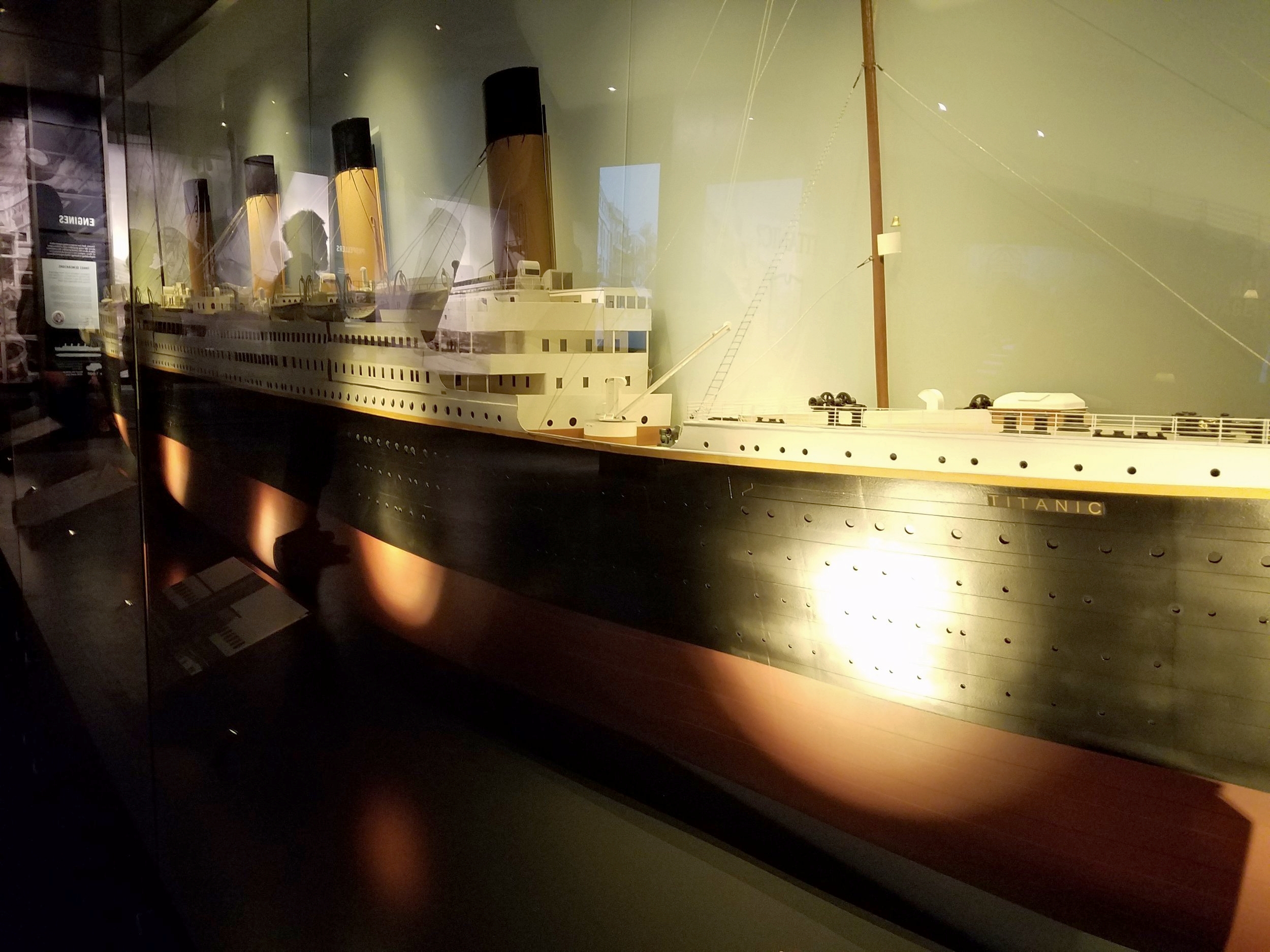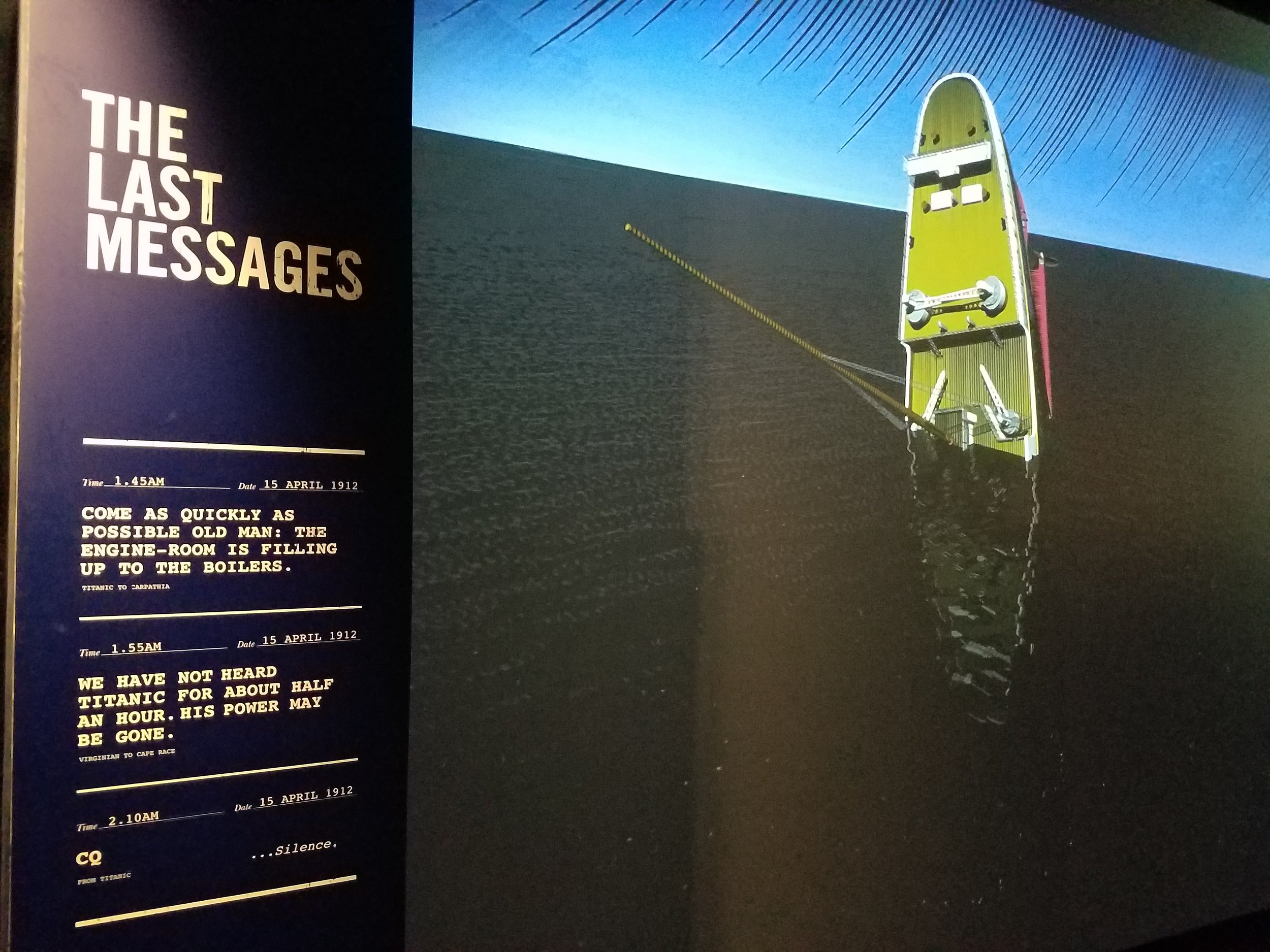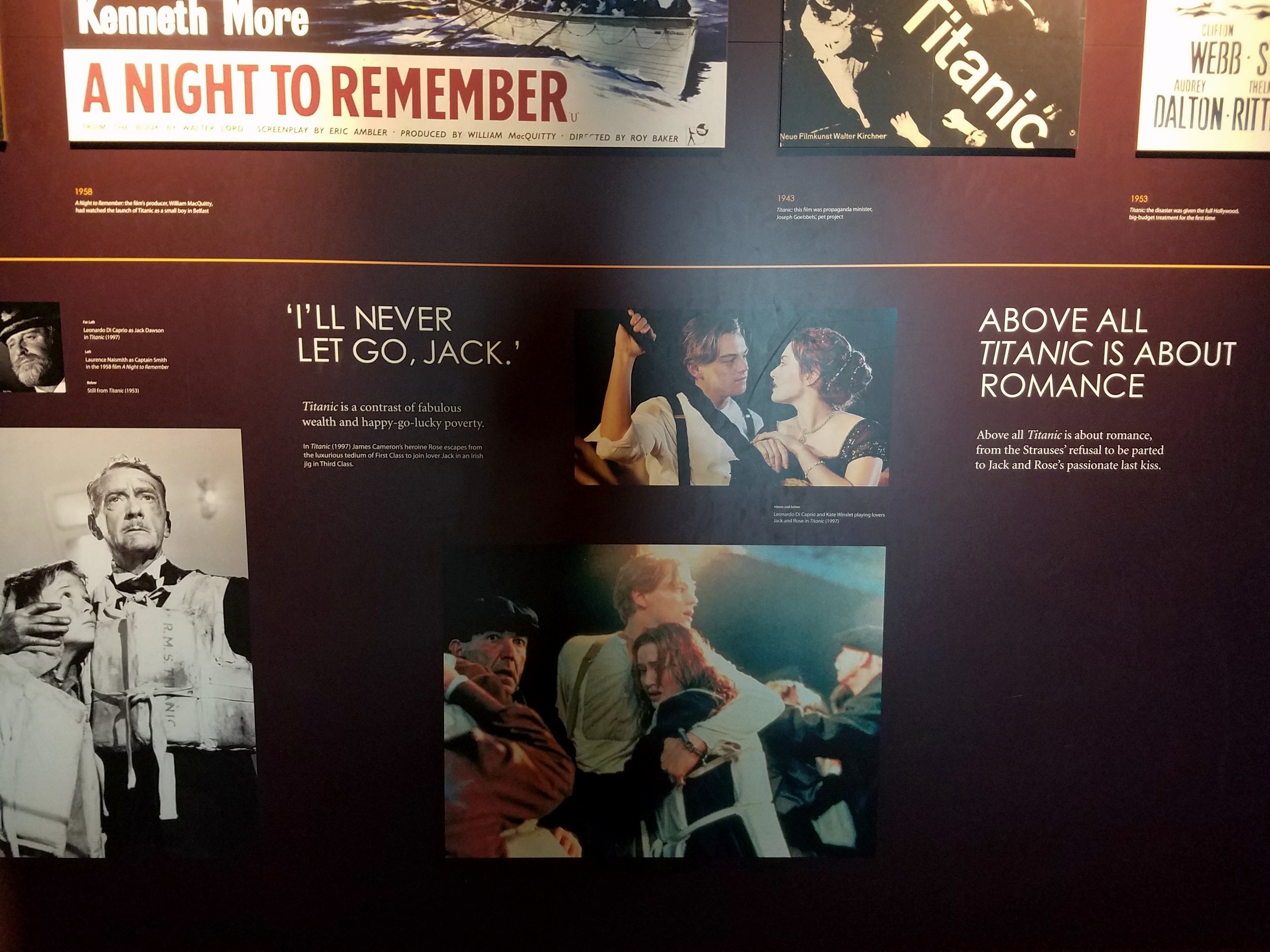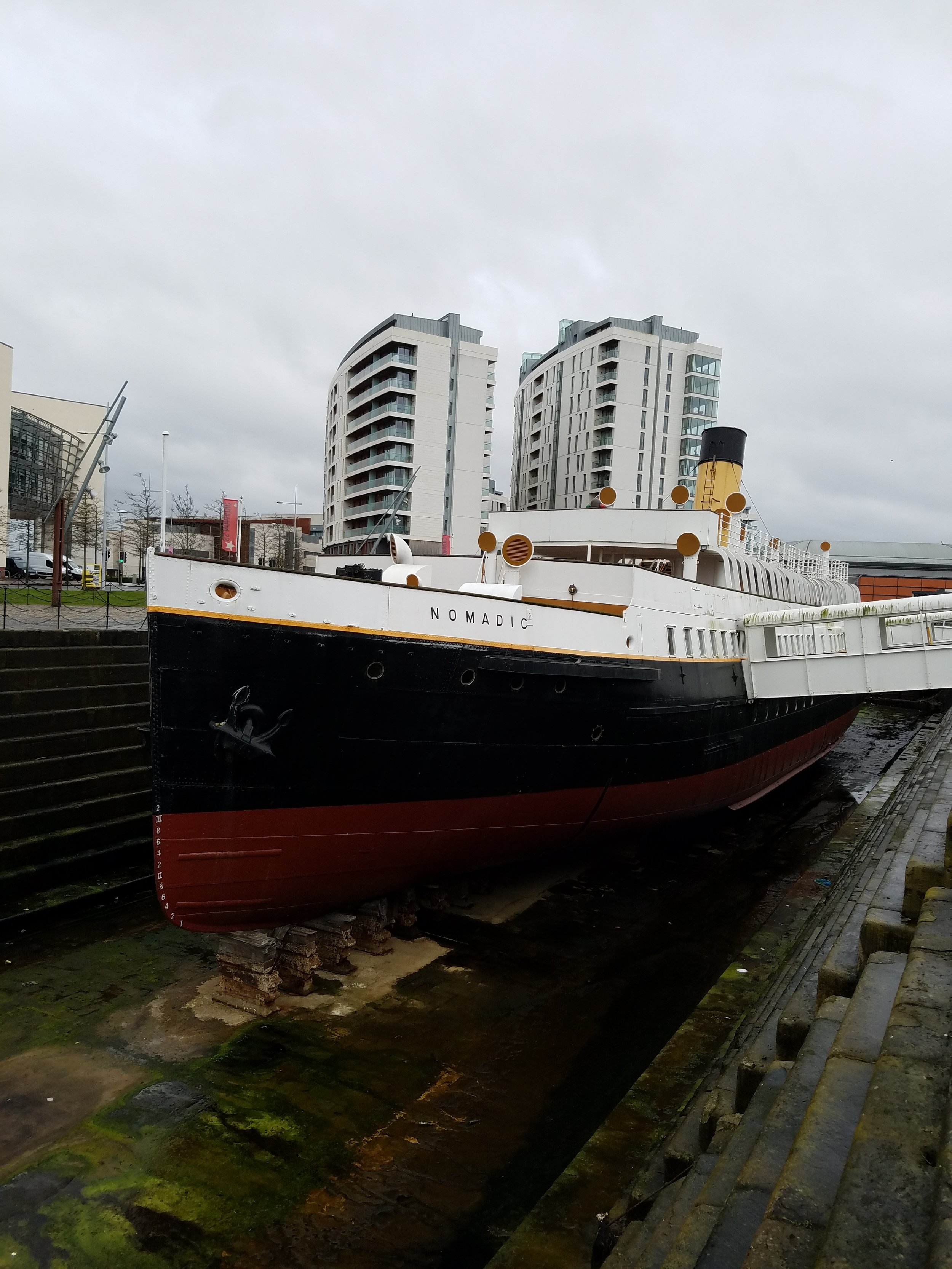If there's one thing travelers everywhere have in common—it's that we love a good story. We're not only fascinated by the beautiful sights, but also by the histories and legends of the places we visit. There was no shortage of either in Northern Ireland.
Giant's Causeway
Legend has it that the giant Finn McCool built the Giant's Causeway as stepping stones to Scotland. I could have spent the entire day there—climbing over and photographing the hexagonal stones, which ranged from tan speckled with white and green algae to asphalt made black by enthusiastic sea spray.
The geometric stones of the causeway were a small part of entire site the entrance fee gave us access to. We walked close to a mile along the coast, appreciating the ancient sites and the legends that went with them. The overcast day turned the ocean a beautiful teal gray that nicely complemented the black and green cliffsides.
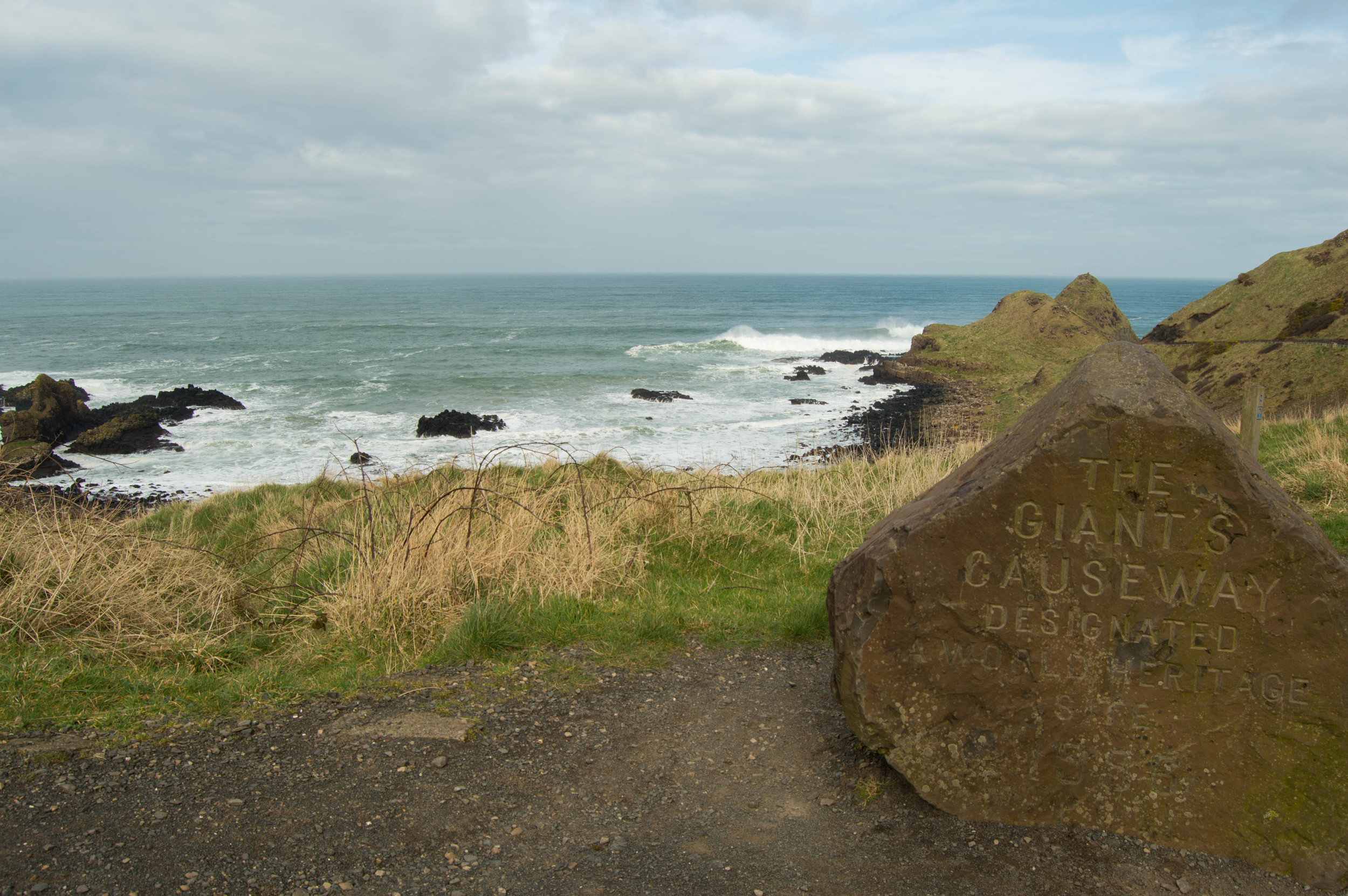
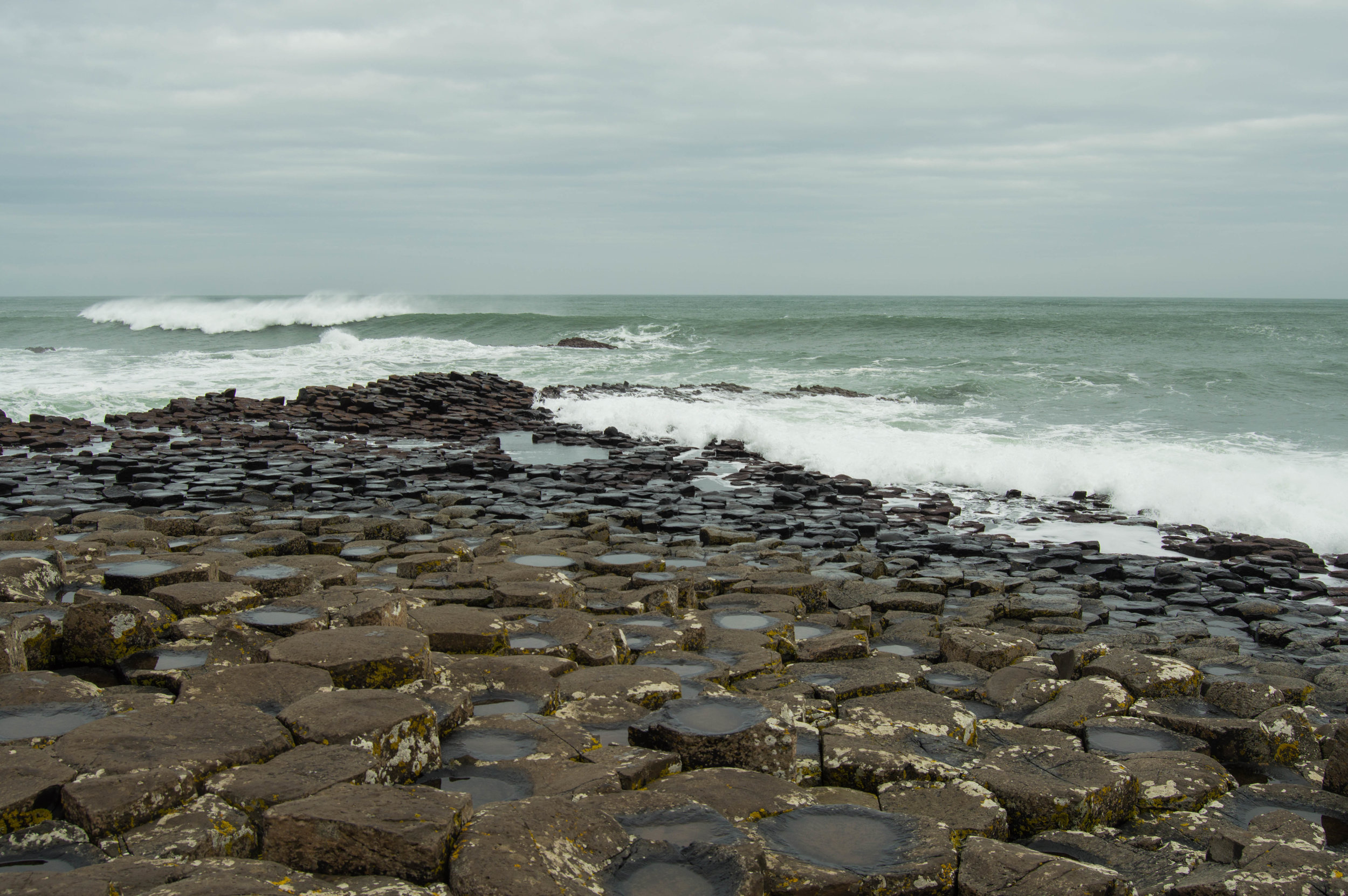

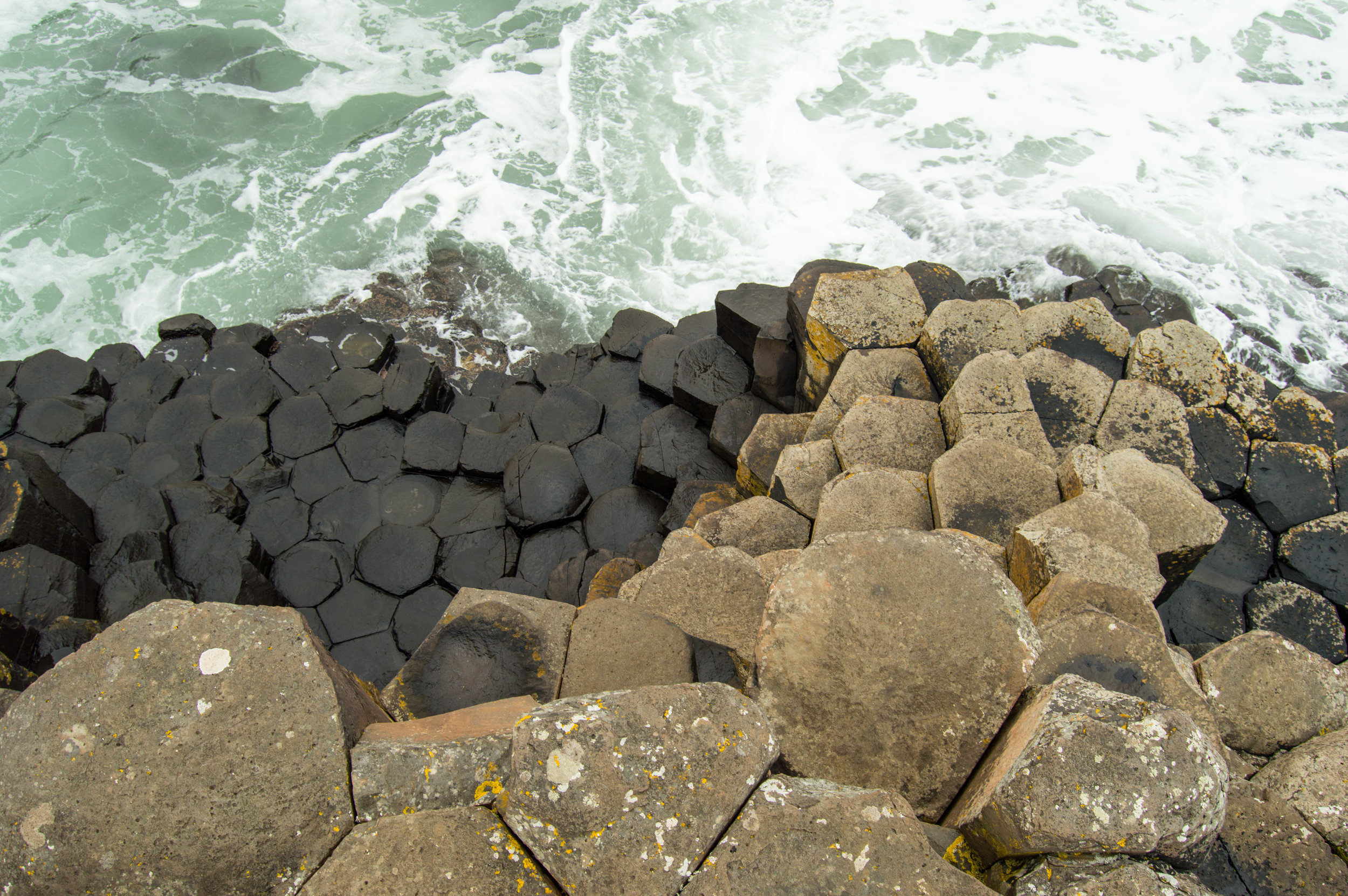
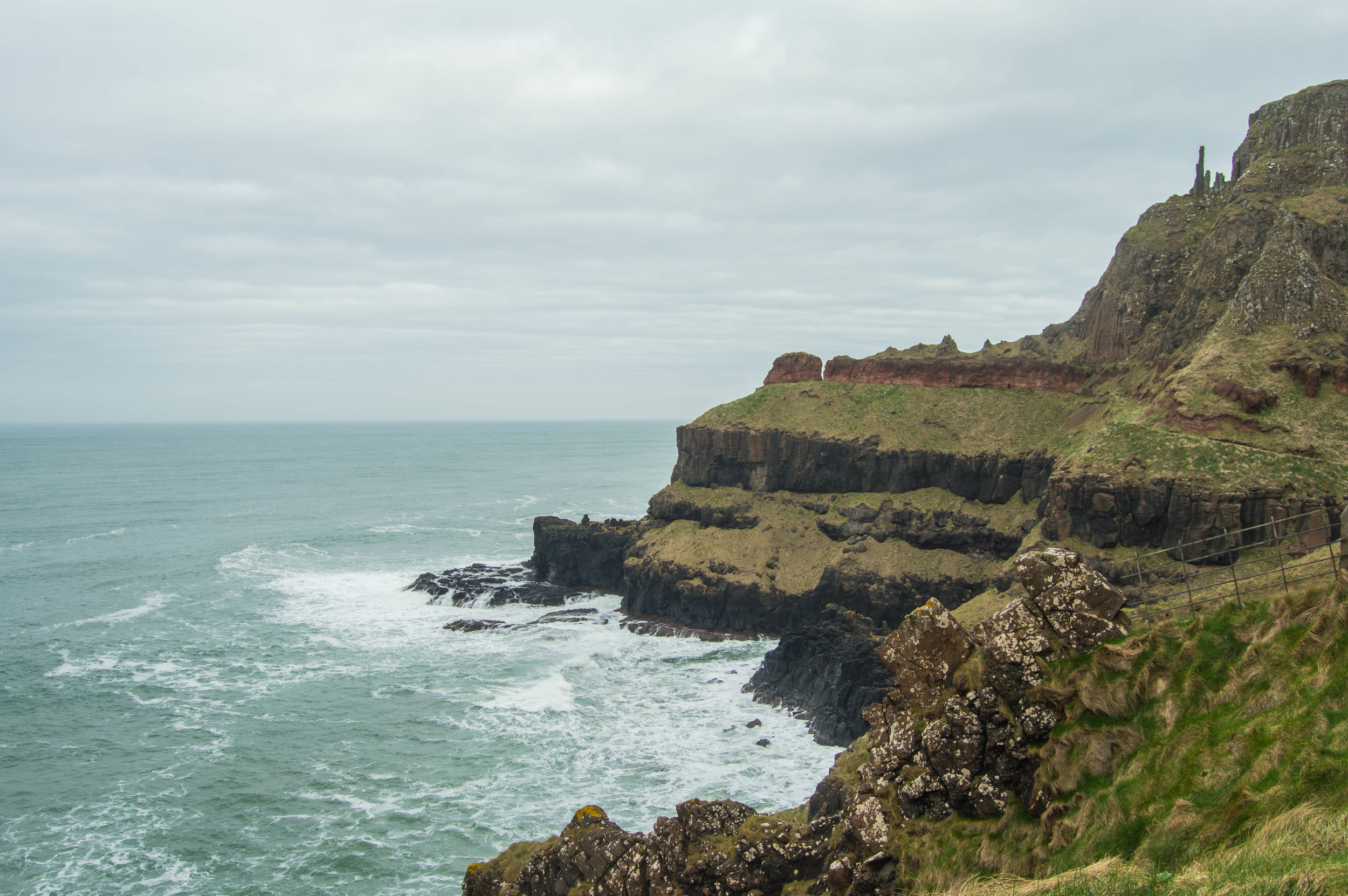
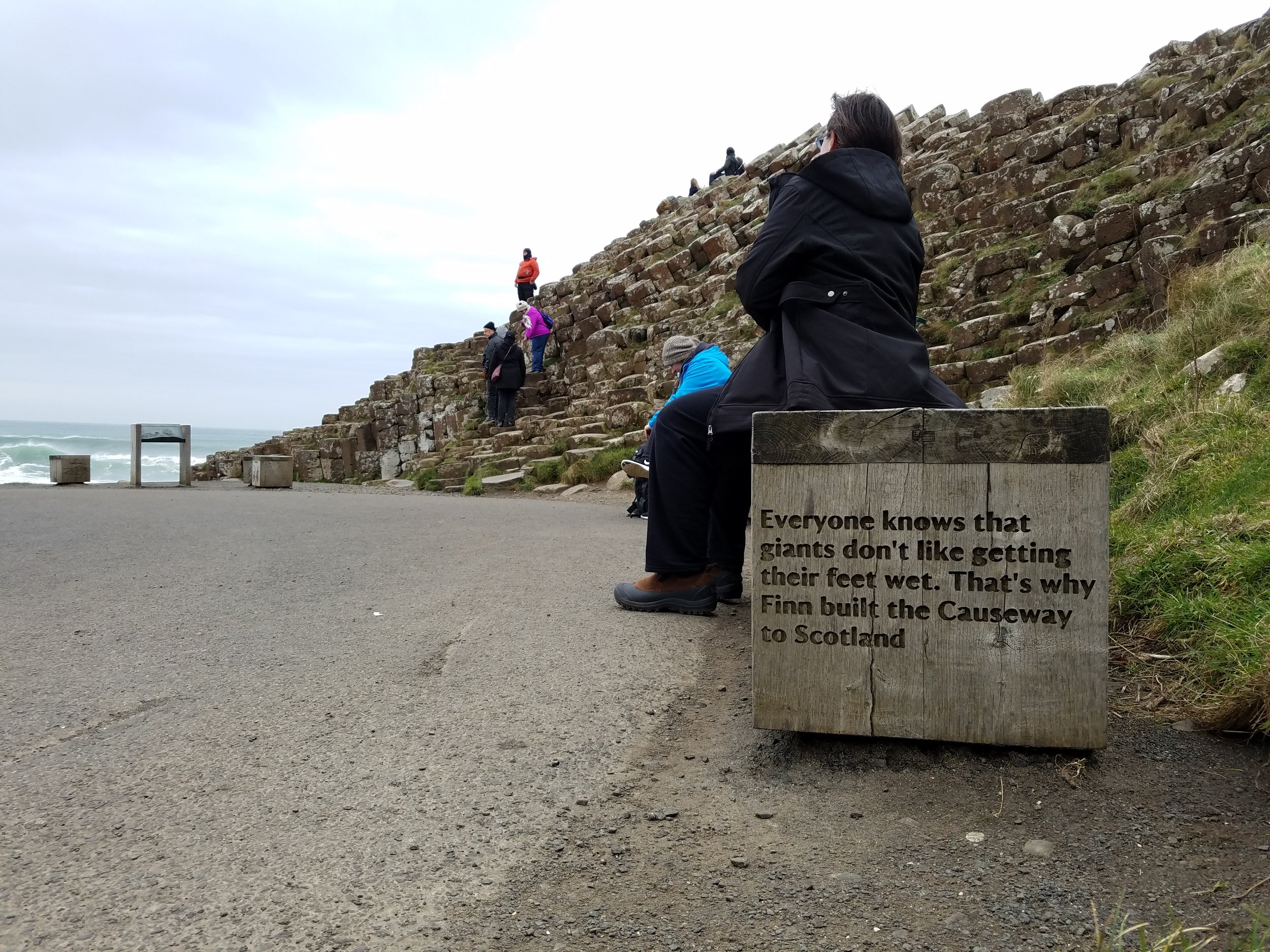
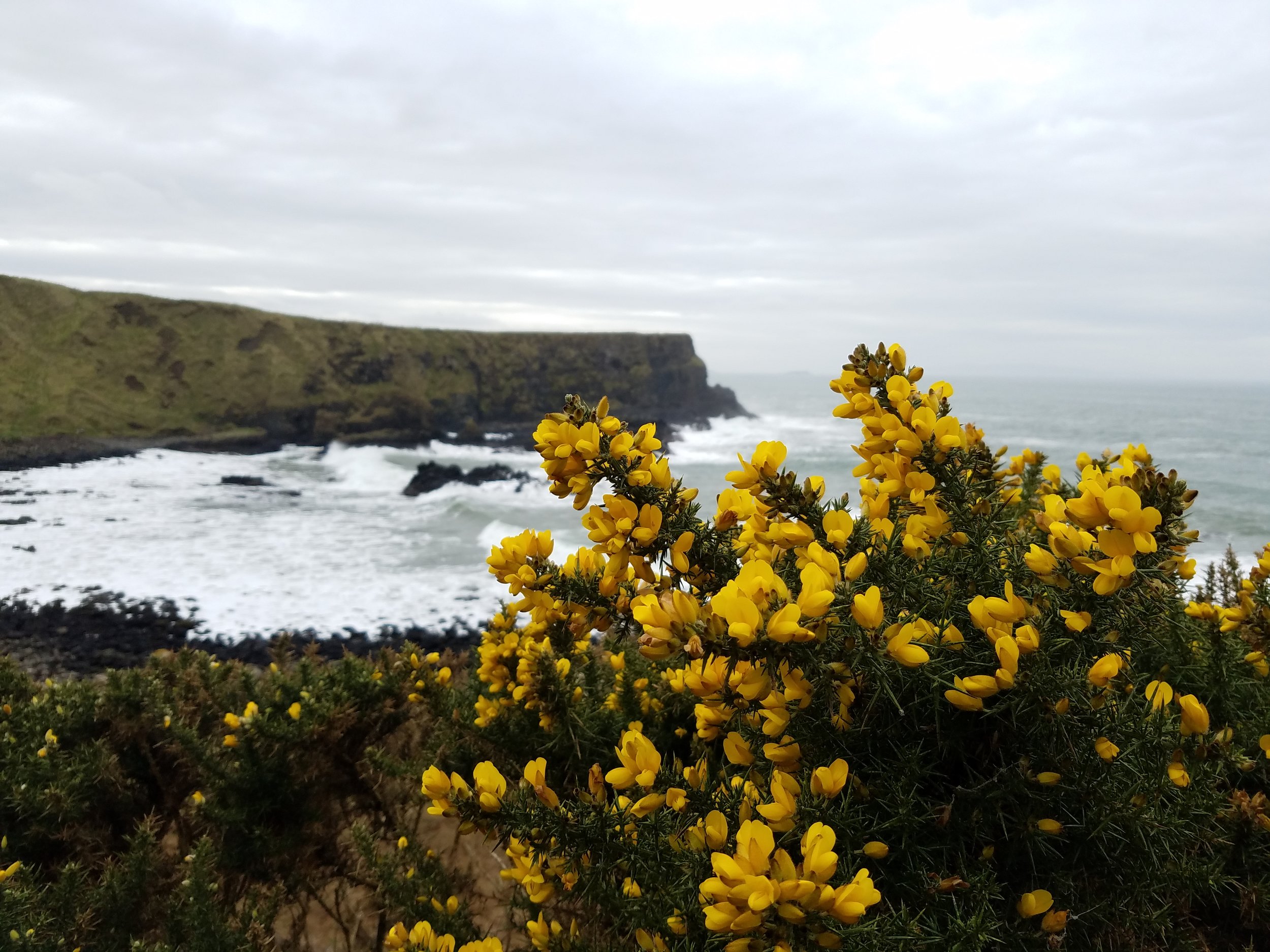
Carrick-a-Rede Rope Bridge
Just up the coast from the Giant's Causeway was the Carrick-a-Rede rope bridge. Suspended about 100 feet above swirling ocean waters, the bridge—once used only by brave fishermen—took us to a tiny island off the coast.
Most of the island was closed off for safety reasons, but we didn't need much space to appreciate the breathtaking views that come with being on cliffs by the sea.
The Dark Hedges
Supposedly planted in the 18th century, The Dark Hedges sit on a what used to be a private road front of Gracehill House—impressing visitors by adding to the mansion's grandeur. While the lane of Beech trees is not longer part of the estate, it's rumored to be the wandering place of the "Grey Lady", a ghost who was allegedly daughter to the man who built the house.
Ironically, the Dark Hedges were the first sight in Ireland that I was less than impressed with. Pictures I saw in my travel research were either breathtakingly ethereal with rays of sun breaking through the trees or dark and funereal with branches that looked like monstrous claws contrasting dramatically against the sky.
Granted, what we saw was more interesting than your average country road and worthy of being a King's Road, but the scene looks more dramatic post-Lightroom than it did in-person.
Cabra Castle
We fell in love with each castle hotel for different reasons—Cabra Castle (actually located in Ireland) for its most authentic castle-like decor. It might have been lacking in the luxurious amenities of Lough Eske and impressive grounds and gardens of Lough Rynn, but it was the most fun castle to roam about. Every corner we turned and floor we climbed led to something more interesting. Cabra Castle was (surprisingly) the only one we stayed in that was supposedly haunted.
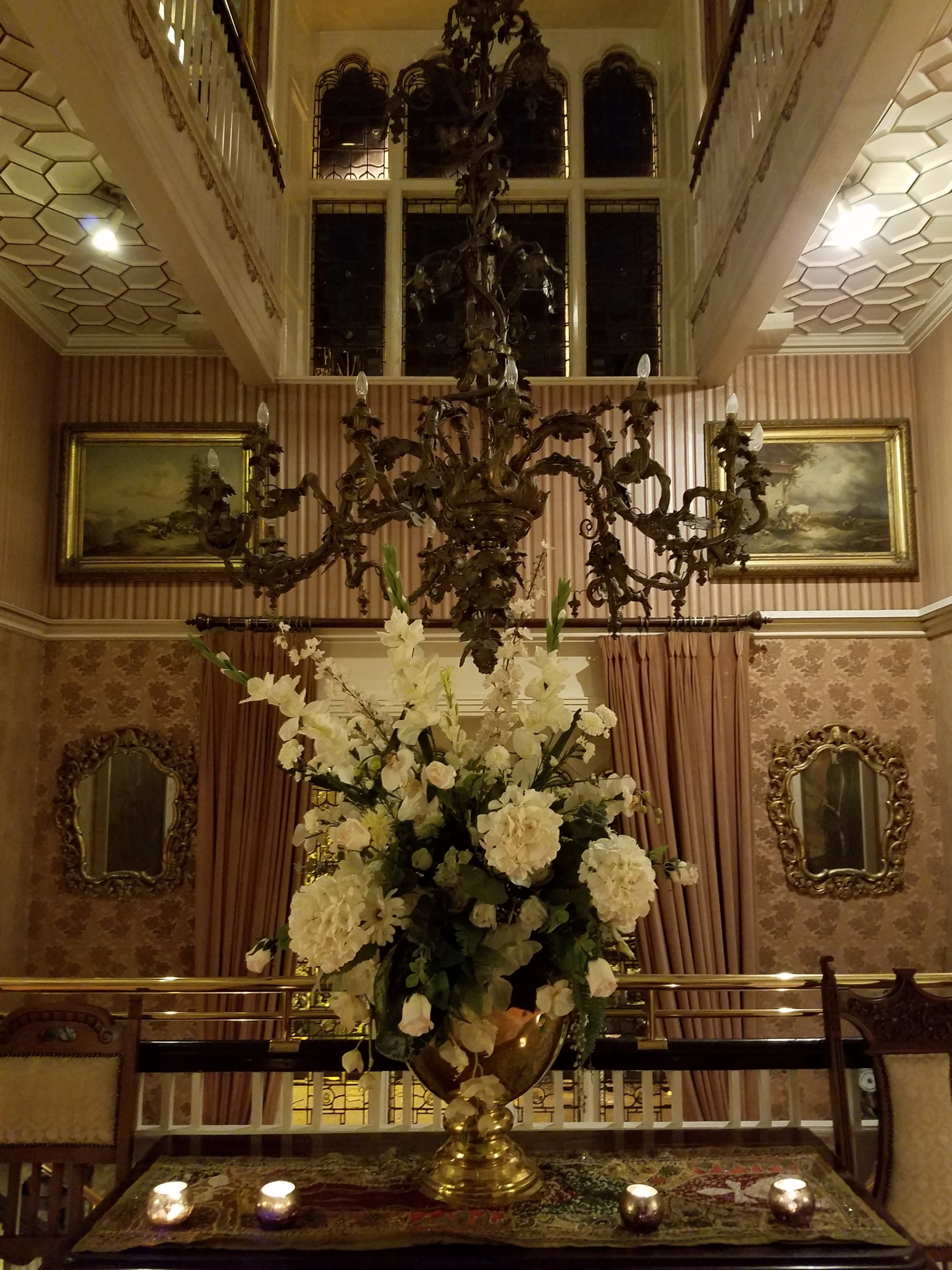
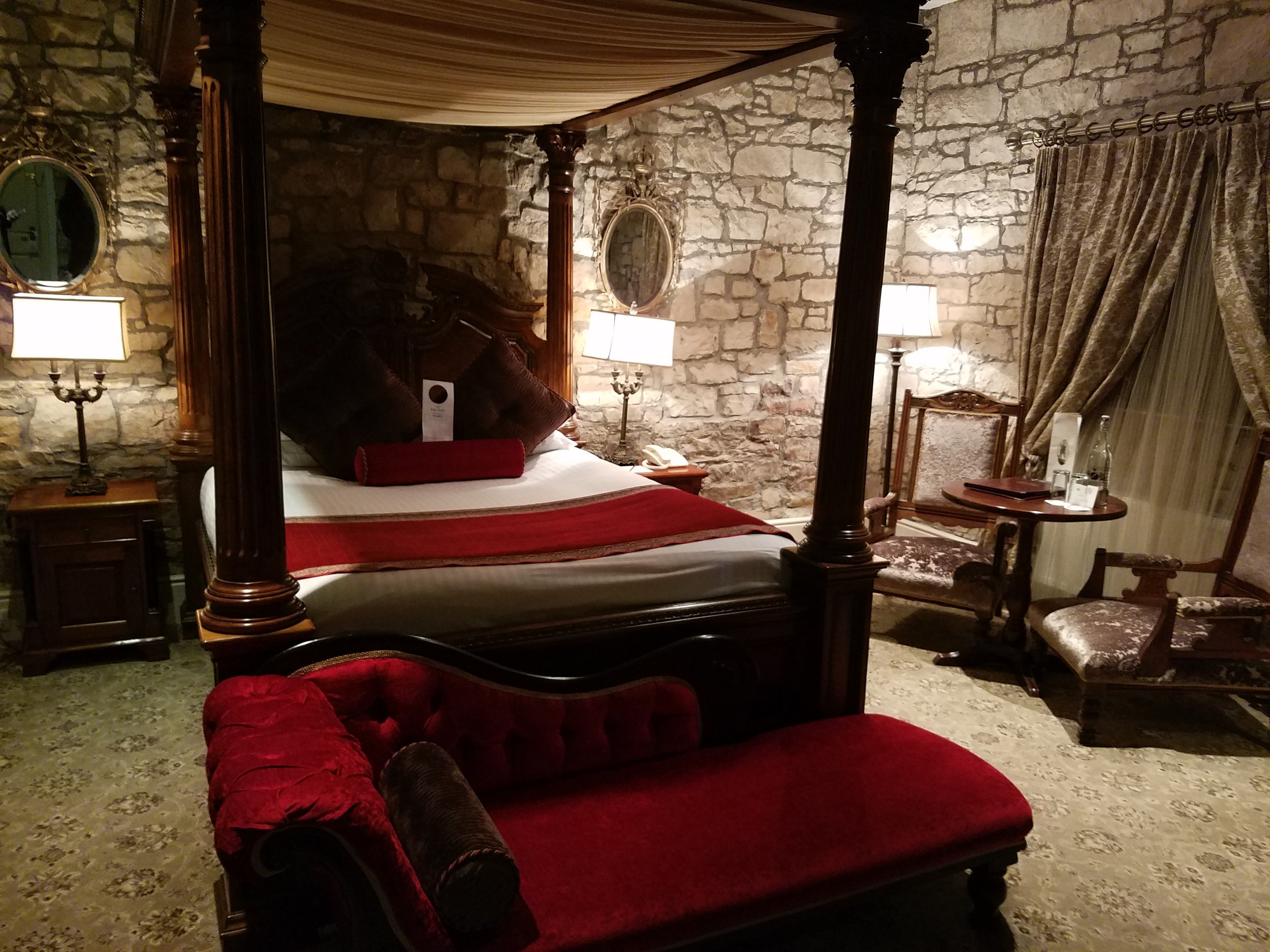

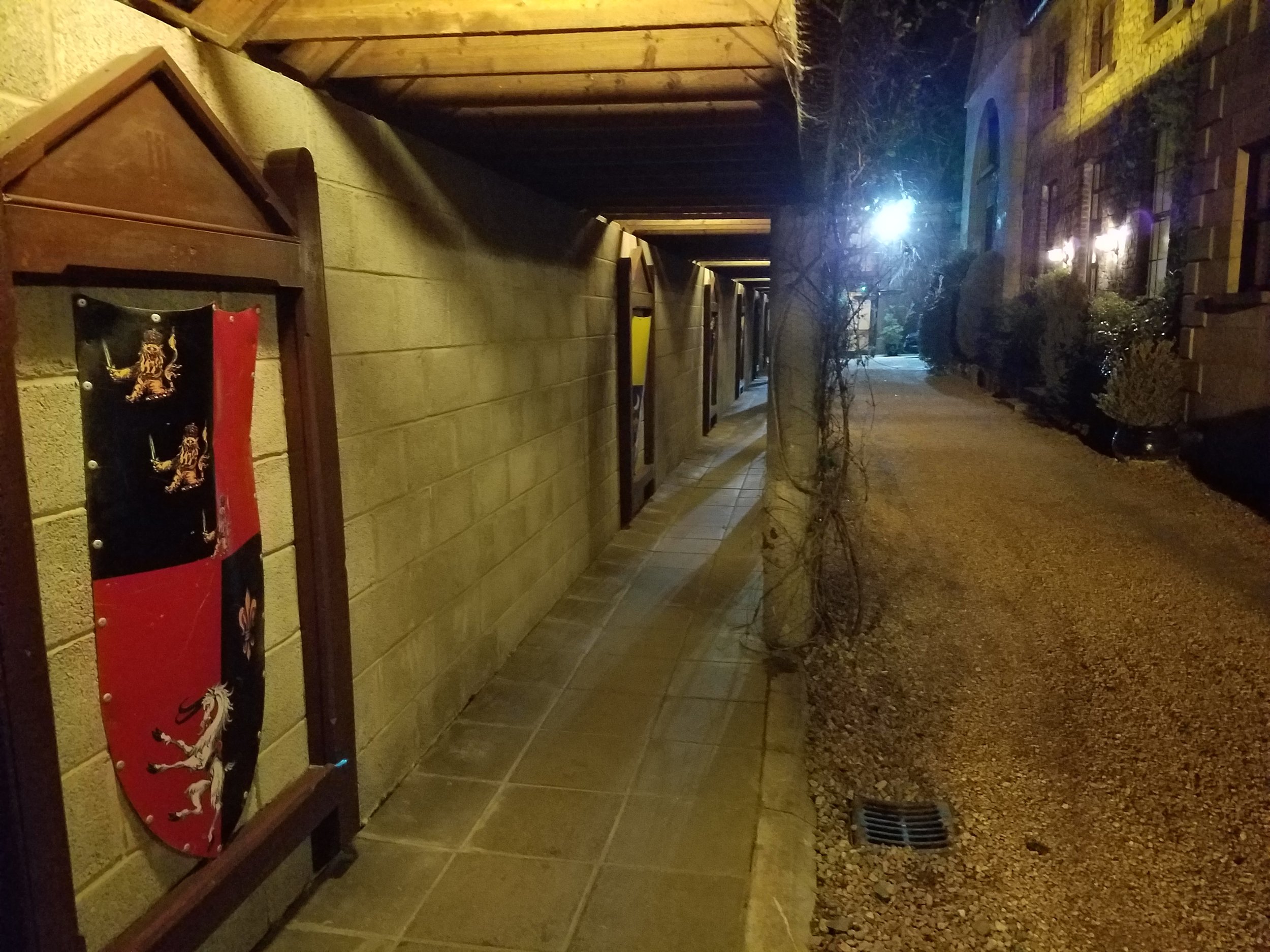
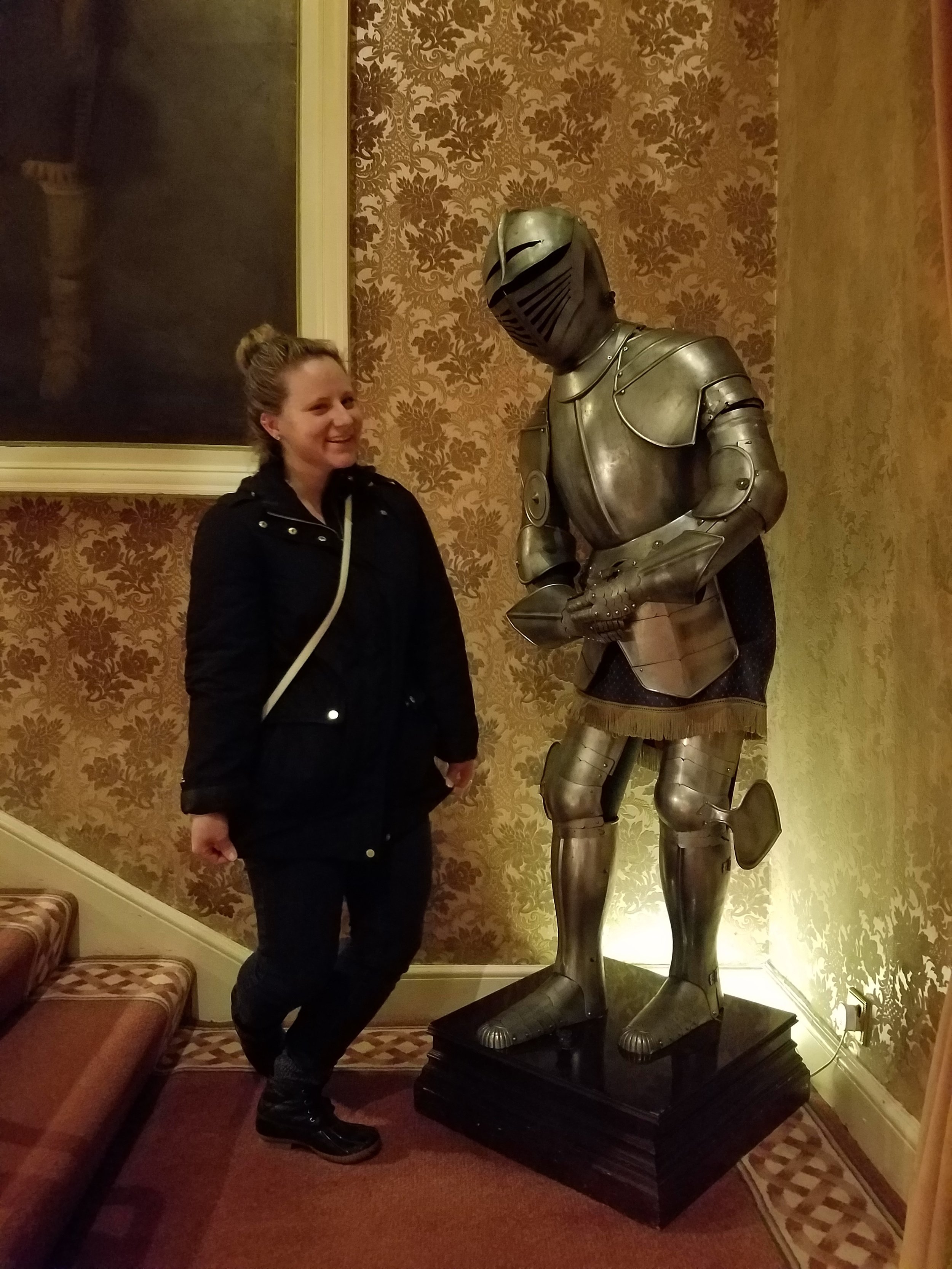
Since we were only here for one night and checked-in late, we had to explore the grounds in the dark. The castle was illuminated green in celebration of St. Patrick's Day, casting an eerie aura on the castle.
We about jumped out of our skins when we turned a corner and heard the barks of two Irish Wolfhounds before we saw them. My "look it's a puppy" instinct took over, but the massive dogs quickly lost interest in us and sauntered back up the driveway they were in.
The creepiest part of the castle (at night, anyway) was the garden. Enclosed by three walls, the garden was completely silent and held strange shadows cast by the willow tree that stood in the center of the square. It was just the kind of place you'd fear to find a ghost lurking about.
Titanic Belfast
Visiting the Titanic Belfast museum was something I'd been looking forward to long before we even booked our trip to Ireland. The story of Titanic has fascinated me ever since I can remember (Leo might have something to do with it).
We got to the museum a few minutes before it opened and I was giddy—there was no other word for it—with excitement. I got even more excited when I caught a glimpse of the gift shop on our way to the exhibit entrance.
The museum, which I later found out was designed by an architect who got his start in Fort Wayne, had the most impressive layout I've ever experienced. Beginning with the rise of Belfast and its thriving linen and shipbuilding industries, we walked through the entire story of Titanic—from being built by the world's largest shipbuilders (Harland & Wolff) all the way to its tragic legacy.
Every section of the museum was a unique experience, with exhibits like an amusement park-like ride that took you through the construction of Titanic and a glass floor that made you think you really were underwater gliding above what's left of Titanic on the ocean floor. The museum didn't skimp on dining either, with a both a café and a sit-down restaurant that served fresh and affordable local fare.
I, of course, couldn't resist buying the commemorative photo and spending way too much at the gift shop. I had been looking forward to this day for years and wasn't going to leave without regretting how much I spent on souvenirs.
Leaving a museum had never been more bittersweet. I loved learning more about the Titanic, but we had Dublin in all its St. Patrick's Day glory waiting for us—and I couldn't wait to see what stories were waiting for us in the city.




